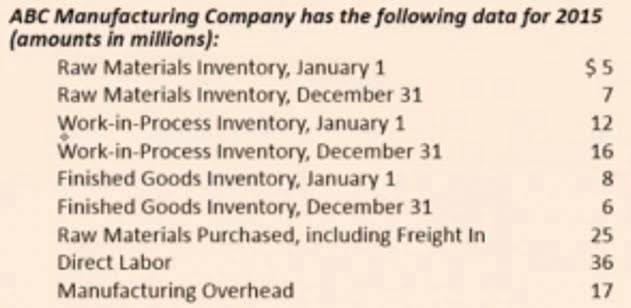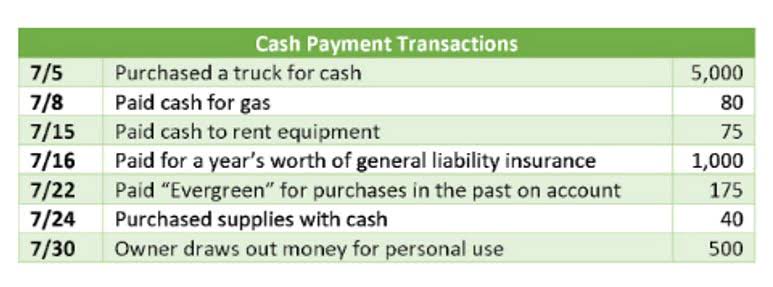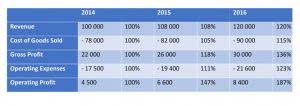
Analyzing liquidity changes over time helps you gauge the company’s ability to cover its immediate cash needs. Equity represents the owners’ stake in the company and is a key indicator of the company’s net worth. Analyzing equity changes over time can provide insights into how the company has financed its operations and whether it has generated profits or incurred losses.

Step 2: Selecting the Time Periods for Comparison
Horizontal analysis examines trends in accounts such as cash from operations, capital expenditures, and cash from loans or equity financing. Strong cash flow from operations enables a company to reduce its dependence on external financing. Suppose we’re tasked with horizontal analysis formula performing a horizontal analysis on a company’s financial performance from fiscal years ending in 2020 to 2021. A fundamental part of financial statement analysis is comparing a company’s results to its performance in the past and to the average industry benchmark set by comparable peers in the same (or adjacent) industry.
Step 2 – Calculate nominal changes
This could prove to be the main factor enabling the company to attain a consistent increase in net income and, therefore, the main point of focus in maintaining it. This means Mistborn Trading saw an increase of $20,000 in revenue in the current year as compared to the prior year, which was a 20% increase. The same dollar change and percentage change calculations would be used for the income statement line items as well as the balance sheet line items. The figure below shows the complete horizontal analysis of the income statement and balance sheet for Mistborn Trading.

📊 Master Excel & Finance SkillsJoin 100K+ Learners⚡Up to 80% OFF!Instructor: Dheeraj Vaidya, CFA, FRM
However, when using the analysis technique, the comparison (current) period can be made to appear uncommonly bad or good. It depends on the choice of the base year and the chosen accounting periods on which the analysis starts. The meaning of a positive or negative percentage change varies depending on the specific line item. A 10% increase in revenue is a favorable sign, indicating business expansion. However, a 10% increase in operating expenses, especially if revenue growth is slower, could signal declining efficiency or rising costs that may erode profitability. Similarly, a decrease in Accounts Payable could be positive, suggesting faster payment to suppliers, or negative if it indicates a reduction in purchasing activity.
Why Finance Teams Are Moving to Continuous Budgeting
This analysis can uncover whether a company allocates an excessive portion of its revenue to certain costs, such as operating expenses or debt servicing, which can signal inefficiencies or financial risks. Cash in the current year is $110,000 and total assets equal $250,000, giving a common-size percentage of 44%. If the company had an expected cash balance of 40% of total assets, they would be exceeding expectations. The figure below shows the common-size calculations on the comparative income statements and comparative balance sheets for Mistborn Trading. The highlighted part of the figure shows the number used as the base to create the common-sizing. Common-size statements offer a more granular perspective on financial data by expressing each line item as a percentage of total revenue (for income statements) or total assets (for balance sheets).

Percentage Change

Expressing the financial statements as percentages of total revenue or total assets allows easy comparison of the proportion of each item over time. This normalization using percentages is the key benefit of vertical analysis, rather than just comparing the absolute rupee amounts. By the early 1900s, the principles of vertical analysis were https://news.goal-arab.net/net-working-capital-nwc-formula-calculator-updated/ being applied to compare line items as percentages of total assets or total revenue. This technique was pioneered by analysts like Henry Varnum Poor, who published financial ratios in his financial services guides. It allowed analysts like Poor to better understand the composition and proportional relationships between items on the income statement and balance sheet.
- Comparative financial statements serve as the cornerstone of horizontal analysis.
- For this technique to be used, at least two financial statements (of the same type) need to be in existence.
- For example, let’s take the case of the income statement – if the gross profit in year 1 was US$40,000 and in year 2 the gross profit was US$44,000, the difference between the two is $4,000.
- CFI is the global institution behind the financial modeling and valuation analyst FMVA® Designation.
- To illustrate the application of horizontal analysis on balance sheets, let’s examine a hypothetical example of Company ABC’s balance sheets for 2022 and 2023.
- Analyzing liability trends is essential for understanding how the company manages its financial obligations and its long-term financial health.
- By tracking changes across periods, this method helps businesses spot patterns and make informed decisions.
- When used together, both methods provide a more detailed view of a company’s financial health.
- Operating cash flow is a key indicator of a company’s ability to generate cash from its core business operations.
- For example, let’s say Reliance Industries had revenue of Rs.5,00,000 crores in 2023 (base year) and revenue of Rs.6,00,000 crores in 2024 (current year).
- It provides insights to inform management decisions on performance, budgeting, and forecasting.
Theoretical question or Sum based on horizontal analysis vs vertical analysis — You may be asked to define the difference between horizontal analysis and vertical analysis. Mastering these advanced techniques and tools can significantly enhance your ability to extract meaningful insights from financial data and make informed decisions based on your horizontal analysis findings. Liquidity is a critical aspect of a How to Run Payroll for Restaurants company’s financial health, as it determines its ability to meet short-term obligations and seize opportunities.

Can horizontal analysis be used on all financial statements?
In each industry, market participants attempt to solve different problems and encounter various obstacles, resulting in financial performance that reflects a given industry’s state. The two analysis are helpful in getting a clear picture of the financial health and performance of the company. Horizontal analysis is arguably the most widely used type of financial analysis there is. An individual event or period of underperformance isn’t just normal, it’s expected. And when it comes to strategy, in just about any context, the trend is far more important than the raw data.
Horizontal Analysis of the Income Statement
- From 2021 to 2020, we’ll take the comparison year (2021) and subtract the corresponding amount recorded in the base year (2020).
- The consolidated financial statement of Wipro Limited and its subsidiaries for the year ended March 31, 2024 is uploaded below.
- This requires you to follow the same accounting methods and principles for every reporting period.
- I’m sharing tales from the trenches of over a decade of finance experience from Fortune 100 companies to spirited startups.
- COGS was 60% of revenue in 2020, 55% in 2023, and 59% in 2022, You can see it dropped but then started rising again as a percent of revenue.
You can change your settings at any time, including withdrawing your consent, by using the toggles on the Cookie Policy, or by clicking on the manage consent button at the bottom of the screen. Finance and accounting experts with real-world experience write every articles. Prior to publication, articles are checked thoroughly for quality and accuracy. I’m sharing tales from the trenches of over a decade of finance experience from Fortune 100 companies to spirited startups.

